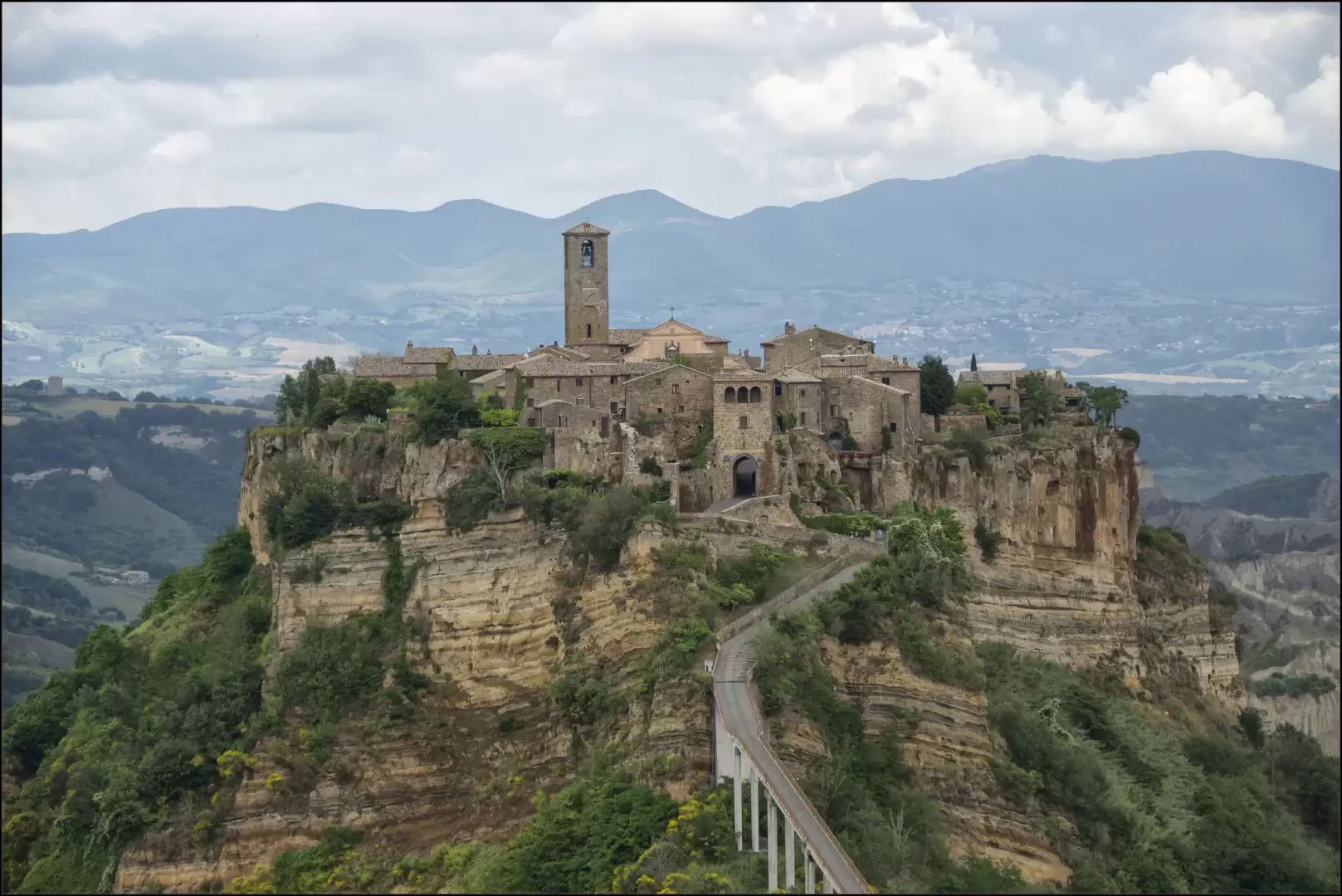Lazio

Access
Gli accessi al Lazio sono policentrici. Gli aeroporti di Roma Fiumicino “Leonardo da Vinci” e Roma Ciampino “G.B. Pastine” garantiscono collegamenti nazionali e intercontinentali; il porto di Civitavecchia è hub crocieristico e ro-ro/ro-pax con rotte su Sardegna, Sicilia, Spagna e Tunisia. La rete autostradale comprende l’A1 Milano-Napoli con le diramazioni Roma Nord e Roma Sud, l’ lungo la costa fino a Civitavecchia e gli assi A24/A25 verso l’Adriatico; arterie statali come l’Appia () e la Pontina () integrano i collegamenti verso il Basso Lazio. La ferrovia ad alta velocità ha in Roma Termini e Roma Tiburtina snodi nazionali lungo gli assi Torino-Milano-Venezia–Bologna–Firenze–Roma–Napoli–Salerno, con prolungamenti verso la Puglia e la Calabria; una rete regionale capillare collega i capoluoghi e i principali centri del litorale e dell’entroterra.
Introduction
Il Lazio è una regione dell’Italia centrale affacciata sul Tirreno, attraversata dal Tevere e articolata in un mosaico di ambienti: dorsali appenniniche e rilievi antiappenninici, sistemi collinari vulcanici e vaste pianure costiere bonificate, laghi craterici e litorali sabbiosi interrotti da promontori come il Circeo. È una terra di laghi e di leggende, di terme e di storia: qui la tradizione romana convive con le tracce etrusche di Tarquinia e Cerveteri, con le ville rinascimentali di Tivoli e con l’identità civica della capitale, Roma, che concentra gran parte della popolazione e dei servizi. In questo paesaggio, che alterna scenari intatti e orizzonti urbani, rientrano luoghi emblematici come Villa Borghese – parco storico e museo a cielo aperto – e un fitto sistema di aree protette che uniscono costa, zone umide e montagne in un continuum ecologico raro nel Paese.
Description
Cradle of western civilisation and Christian culture, of lakes and legends, of thermal baths and history, of winding roads and green hills. This is Latium, a region in central Italy bathed by the Tyrrhenian Sea, traversed by the waters of the Tiber River and characterised by a predominantly hilly and mountainous terrain, flat near the coast. The region offers landscapes that contrast and complement each other, unspoilt scenery and spectacular horizons enclosed by urban centres. Visitors are offered glimpses of unforgettable beauty, such as Villa Borghese in Rome, the capital of Italy, the most famous city park where walking, even by bicycle, is a unique experience between art, with the Borghese Gallery and its masterpieces, and nature, which surrounds and immerses it, among small lakes and centuries-old trees. Latium is also a region of spas, whose history is linked to the numerous springs of curative water that had an enormous development from the Republican Age first, to the Imperial Age later. The Romans built sumptuous thermal baths of which there are spectacular testimonies, scattered all over the territory; first of all the Baths of Caracalla, in the heart of Rome. Tivoli is another spa town but its name is mainly linked to the artistic beauties it holds. Its fame is due to monumental villas such as Villa D'Este, with its splendid fountains, gardens and palace, a magnificence of the Renaissance period, and Villa Adriana, the former residence of the Emperor Hadrian. The two villas have been included in the UNESCO list of World Heritage Sites. For those who prefer the sea, the region offers authentic pearls such as Gaeta, Sabaudia, San felice Circeo, Sperlonga and the islands of Ponza and Ventotene, while for those who love the lake, Bracciano is an enchanting expanse of water surrounded by the intense green of the surrounding nature and where the imposing 16th century castle stands. Strolling through the narrow streets of the small villages on the shores of the lake will give you a sense of how much these places are linked not only to the Roman empire, but have also served as a stage for epochs ofYerse. An example of this is Lake Bolsena, in the Italian-speaking part of the country, the largest lake of volcanic origin in Europe, from which two islands, Bisentina and Iartana, emerge. Finally, mountain lovers will not be disappointed, as they will find ski resorts in Lazio such as Terminillo, Livata and Campo Staffi. Visiting these lands leaves the memory of unique places and intense emotions, but also the clear perception of the inexorable passing of time, which motivates all the attempts by those who have gone before us to challenge the centuries, leaving something of themselves behind.
Information
Capital city: Rome
Area:17,236 square km
Minimum elevation:0m
Maximum elevation: Monte Gorzano (2458m)
Number of inhabitants: 5,593.239
Name in dialect:
Inhabitants: Laziali
Provinces:Province of Frosinone, Province of Latina, Province of Rieti, Metropolitan City of Rome, Province of Viterbo
Municipalities: 358
Bordering regions: Campania, Abruzzo, Marche, Molise, Tuscany, Umbria
Institutional site: www.regione.lazio.it